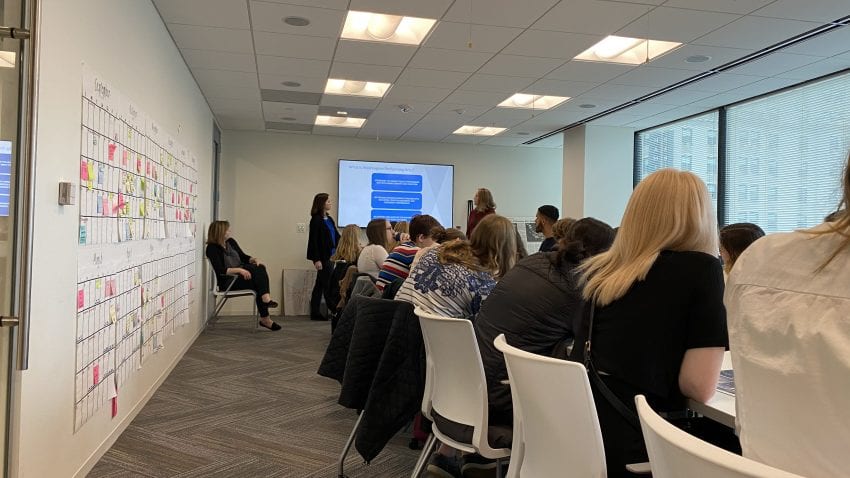“Everybody in, nobody out” became the cornerstone sentence for an organization that the Washington Post would later state, “has enriched the life of this community beyond any calculation.”[1] Washington Performing Arts was founded by Patrick Hayes in 1966 under the name “Washington Performing Arts Society.” He envisioned Washington DC as an arts capital of the world, not only a democratic capital. This motivation lead to many collaborations between local arts organizations as well as other groups throughout DC. Hayes made arts accessible to everyone not only through mainstage performances, but also through the organization’s first education program, Concerts In Schools (which continues to this day!). What makes innovations like these so remarkable is the climate in which Hayes was working in DC in the 1960s. As I learned from Tim on our Attucks Adams Tour last week, the 1960s in DC were fraught with civil rights issues, uprisings, and political movements. Hannah Grove-DeJarnett, Associate Director of External Relations, remarked during our meeting that Hayes was the front for diversity and inclusion in Washington DC at a time when that was rare.

The conference room we met in was significantly different than other spaces we had been in before. This room was lived in. Sticky note calendars took up one wall, and brainstorming boards were scattered around the room. This is a room where things are accomplished with the citizens of DC in mind.
From early on in the organization’s life, WPA has placed great importance on collaborations in the local government and community. This is unlike the majority of the organizations we have met with thus far in our trip, which have a nation-wide scope to their mission. DC Keys is one of these local programs that WPA spearheads. The program strives to provide each student in DC public schools with in-depth music training on keyboards. Currently, the program serves 27,000 students (which is more students than citizens in Northfield!). Instructors of the program teach kids how to pick out melodies on their instruments, how to improvise with I-IV-V chord progressions, and they even incorporate go-go music (a musical and cultural movement I have learned about since living in DC that incorporates an Afro-Cuban beat with funk elements). WPA collaborates with some nation-wide organizations for their program, while still having a local lens for the program. Yamaha and the National Association of Music Merchants contribute to providing keyboards to the DC schools. This revolutionary program has been of great encouragement for me, as I have the opportunity to work in my local community in the music education sphere. Hearing from Michelle Hoffmann, Director of Education and Community Engagement, and Trisha Taylor, Assistant Director of Education about the successes of their program is inspiring. Their work to make an “outside of the box” music program feasible for the community they are serving provides me with an aspirational model for the kinds of work I hope to be involved in.
Along with shaping the creativity of young minds in Washington DC, Washington Performing Arts plays a role in defining American identities on a larger scale. Their Children of the Gospel Choir and Men and Women of the Gospel Choir continue in the tradition of gospel singing. The participants are provided with the opportunity to actively engage with a part of their identity through singing gospel, a genre that was created out of the many emotions, trials, and struggles that the slaves endured. According to the National Museum of African American History and Culture‘s Musical Crossroads exhibit, gospel is,
“Rooted in the spirituals and gospel hymns of the black church, [and] emerged in the 20th-century in urban working-class communities. Over the course of a century gospel has become a global, multidimensional genre combining Christian teachings and the music industry’s powerful capacity for publicity, recordings, and concerts.”
As participants in the choir, the children learn music history and theory, along with the tradition of singing the gospels. The choir serves as WPA’s “best ambassadors,” as Tricia said. They have been called upon to sing at the White House, Good Morning America, the Kennedy Center, and other high-profile organizations. Their work in spreading gospel music allows listeners and participants, alike, to engage in an American identity.
As I’m reviewing my notes from the afternoon our class spent at Washington Performing Arts, I am overwhelmed with the wealth of knowledge, passion, and care that we were able to experience thanks to Trisha, Michelle, and Hannah. Their work (along with the efforts of the rest of the staff at WPA) provides a model of an amazing local organization that I aspire to be able to emulate once I return home to rural Minnesota.
[1] https://www.washingtonperformingarts.org/aboutus/our-founder/
